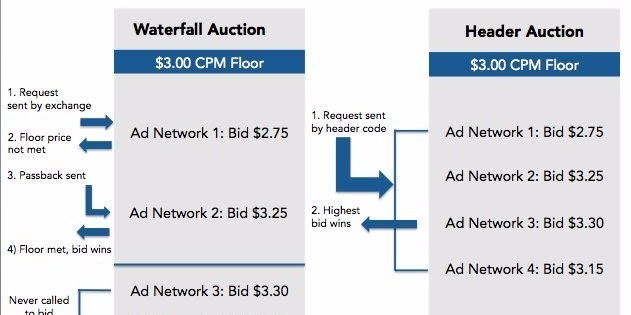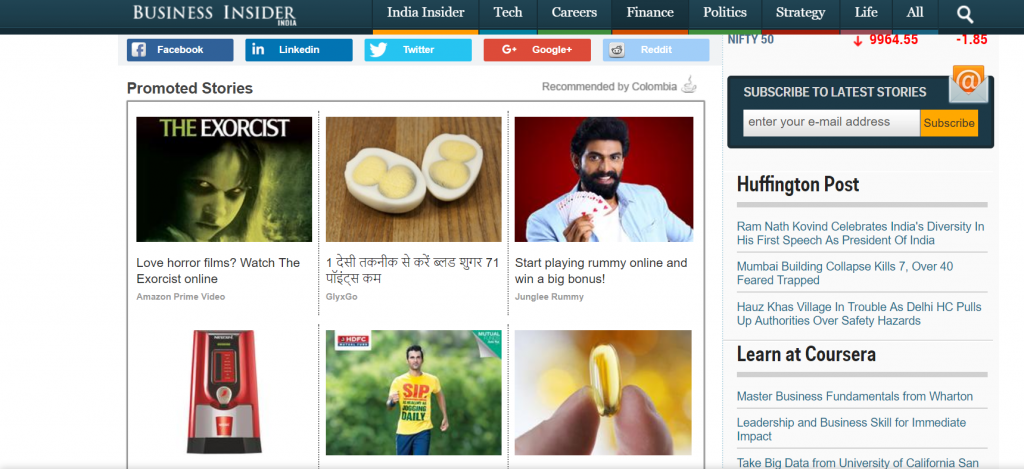
One of the topmost concerns of online publishers today is how to increase their ad revenues. Many believe that it can be achieved if they can lead more traffic to their website. There are sure-fire ways of doing that, like creating high-quality content, extensive distribution of the content, and also engaging users by incorporating digital ad formats. But that’s not all. If you want the ad revenues from your website go from being good to great, you need ad revenue optimization.
Publishers have been facing some serious challenges lately. One such challenge is competing with the highly popular social networking sites like the Facebook, which have been keeping the readers on their platforms affecting the traffic to the publishers’ direct websites. Choosing the right ad revenue optimization techniques will allow them to deal with these obstacles more effectively.
Here are some of the most effective ways to optimize your ad revenue:
1. Header Bidding
Generally, medium to large publishers aim at increasing their total ad revenue by offering their inventory to several ad networks. First, they offer their impressions to the network that pays the highest. The rest is then passed over to the next network in the chain. This process is known as “publisher waterfall.” Although it is a programmatic selling technique, before the waterfall begins, there can also be direct deals. Whatever is left of the inventory at the end is used to run ads from either the Google Ad Network or house ads.
However, this method is not free from problems. For example, setting up a waterfall system can be time-consuming and requires a high level of expertise and constant experimentation. Moreover, there are also risks of revenue leakage and higher ad latency.
So while this system is still being used, people are working out ways that will eventually take over. Header Bidding, which is also a programmatic selling technique, is the result of such experimentation. Instead of the bit-by-bit method applied by waterfall technique, header bidding enables publishers to offer their inventory to multiple advertisers at the same time. The idea behind the system is to save time and ensure that the impressions are sold to only the highest bidders by increasing competition between them.
Compared to waterfall system:
- Header bidding requires less management as there are not as many variables to tweak, set, and organize on a continuous basis.
- The revenue is higher since the impressions are sold through auction and it has been found that by adding just one extra demand partner, the total revenue can increase by 10%. In case of waterfall system, there is no surety that an ad network appearing higher up in the value chain will pay the highest rate for every impression.

2. Direct Sales
Many advertisers are willing to pay heftily if they get the most effective spots for their ads. The competition for this is becoming more intense with every passing day.
- All advertisers are looking to place their ads in the spots where they will get the maximum attention of their target audience. Direct sales can provide a guarantee to the media buyers on premium ad placement, the price, or the volume of impressions. Therefore, a lot of advertisers are willing to buy inventories directly from the publishers.
- Ads sold directly also offer higher engagement alongside a high visibility. If you have a highly targeted audience, your site can attract certain advertisers who are ready to buy directly from you. Targeted audiences do not need to have a high purchasing capacity. But f your site caters to an audience that is highly relevant to the advertisers, your site will be in high demand amongst such advertisers.
- Direct selling also allows publishers to take home all the money earned from selling the ads since the ad networks are not involved in this method. However, direct selling may not be very profitable for the smaller websites and publishers. If your site gets a high volume of traffic then direct sales can be rewarding.
3. Native Advertising
Native advertising is gradually gaining ground among content marketers as it can effectively increase their website revenues and fill rates. It is a type of paid media which blends perfectly into the overall user experience and design of the host site.
There are six types of native advertisements:
- Content Recommendation Widgets: The native ads appear to be a part of the site’s natural content. However, they do not deceive the users into believing something else. So users often come across widgets that appear under headings saying “You May Also Like,” “Promoted Stories,” or “Sponsored Content.” These widgets enable advertisers to drive traffic to their websites from the publisher’s site. The following screenshot gives an example of content recommendation widgets appearing under “promoted stories.”

- In-feed Ads: The in-feed ads appear as a part of the publication’s natural content. While readers go through a stream or a gallery on a particular publisher’s page, they come across in the feed ads, which are marked “sponsored” but absolutely blend in to the overall experience.
- In-Ad With Native Elements: This type of advertisement appears like any other ad but has contextual relevance with the article in which they feature.
- Promoted Listings: Ecommerce websites use this type of native advertising. Here they feature the sponsored products first, usually on a category page.
- Paid Search Ads: The paid search ads are almost like the promoted listings, but they are featured at the top of a customer search results.
- Custom Ads: These type of native ads are highly specific to a particular platform and cannot fit into any of the above types. For example the sponsored playlist of Pandora.
4. Audience Extension
Audience extension helps publishers to earn revenue from their site’s traffic without having to sell their inventory for using this service. With this technique, publishers can track down their audience anywhere on the web, forward this data to the advertisers, and earn revenue. This way the advertisers can also reach out to the publisher’s audience on the other sites that they visit. They can serve ads on those sites to appeal to these audience.
The audience extension technique is also known as “lookalike modeling” as it takes into account a familiar audience segment and identifies different shared behaviors which the advertisers can use to target the audience with similar behavior.
Conclusion
The other factors that influence ad revenue optimization are ad size and ad placement. You can vary the size of the ads and also try different placements for the ads to find out how they are performing. Varying these things slightly can significantly increase the CTR of the ads. However, bear in mind that none of these should diminish the quality of user experience, because in such a case you ad revenues will suffer in the long run.
